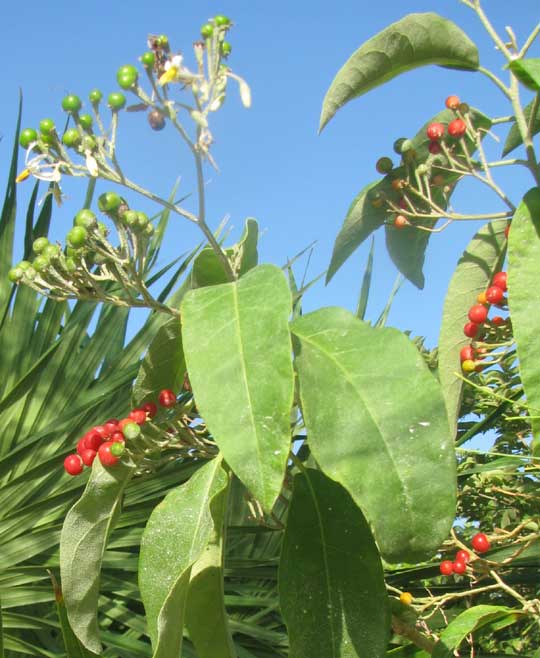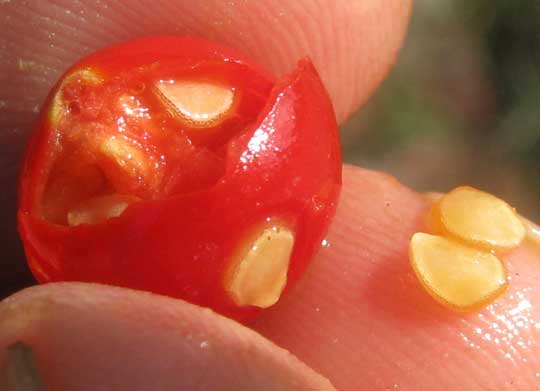Excerpts from Jim Conrad's
Naturalist Newsletter
from the May 15, 2011 Newsletter issued from Mayan Beach Garden Inn 20 kms north of Mahahual; Caribbean coastal beach and mangroves, ~N18.89°, ~W87.64°, Quintana Roo state, MÉXICO
MULLEIN NIGHTSHADE
On our walks up the road, visitors always are attracted to a bush reaching eight or so feet tall (2.5m) and heavily laden with red, pea-sized fruits and white, thumbnail-size flowers. A branch is shown below:

A close-up of some unripe fruits and a flower is below:

A tomato-like fruit with tomato-like seeds is shown below:

Anyone seeing the tomato-like fruits and the flowers with their long, yellow anthers opening to release pollen from their tips, and not the usual way via slits along the edges, will recognize this as one of the nightshades -- a member of the huge, often poisonous genus Solanum.
Though I'd never met this species of Solanum, because it's so abundant and robustly growing along our road, I figured that it must be a typical species found all through the American tropics. However, our pretty bush turns out to be much more interesting than that.
It's the Mullein Nightshade, SOLANUM DONIANUM, not well known at all to science and wildflower lovers. In a 2010 study appearing in an online journal it's described as a "very poorly studied perennial shrub species growing wild on the dunes of the northern coast of Yucatán, Mexico. Its presence has also been reported in Honduras, in the south of Florida and in the Bahamas. It grows on the sand of the beach, near to the mangrove zone... "
And that's about all that's known about it. Except that now we can report to the world that it's also here on the Yucatán's southern coast as well.
What a pleasure to find such relatively undocumented species, and to contribute our little bit of knowledge about it -- even when all we can say about it is, "It's here, and it's lustily flowering and fruiting in mid May!"